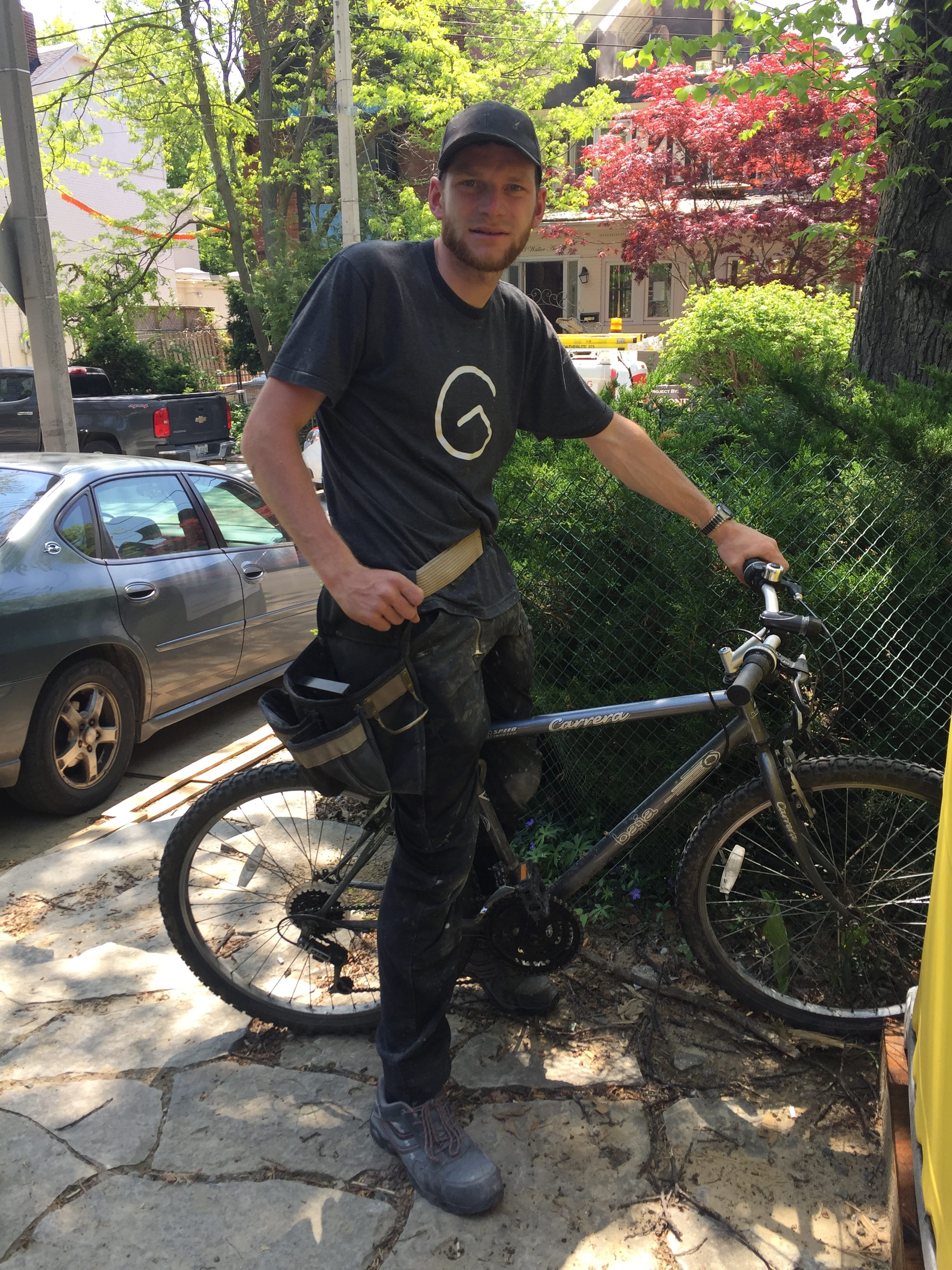Interview with Manuel Sester, Greening Homes’ “wandering” German journeyman carpenter

Greening Homes has made its mark in the residential renovations industry in Toronto, partly because it strives to adopt a variety of initiatives to expand knowledge and experiences rather than settle for the status quo.
Greening Homes’ president, Chris Phillips was introduced to a company that specializes in placing qualified carpenters from Central European countries in companies from overseas. It’s a wonderful opportunity for these tradespeople to experience different ways of building, learn or strengthen other languages, and travel.
Greening Homes has hired three carpenters through the program, and is actively bringing more to the team. Manuel Sester, Flavio Vogel, and the most recent hire, Tobias Altenhuber, have all been great additions.
Here, Manuel shares his experiences coming to Toronto from southwest Germany to work with Greening Homes.
GH – Where in Germany are you from?
MS – I come from the southwest of Germany. More precisely from the edge of the Black Forest, about halfway between Kahrsruhe and Freiburg. There I lived in a small village with around 1,500 inhabitants, but close to several small and larger cities.
GH – Tell us a little bit about your carpenter training in Germany.
MS – The training lasts three years with half that time in a vocational school and half working with a company. As a result, during school we learn the theory, and the company teaches the practical part, helping us to deepen what we learn in school in a timely way.
GH – What brought you to work with Greening Homes’ in Toronto, Canada?
MS – I have been looking for a way to develop myself professionally and privately and to get to know another culture. There was an offer to apply to Greening Homes and I was available. So I can experience a dreamland and continue my knowledge.
GH – What do you note are the main differences in the renovation trade between Germany and Canada?
MS – I come from a rural area with more space between the houses, so it is easier and usual to grow more outward and higher. In Germany we also used different building materials, such as bricks used on roofs.
GH – On the low impact front (energy efficiency, low embodied carbon and waste reduction) what differences do you see between the two countries?
MS – In this respect, Germany is a model. Houses are much more energy efficient because of the strict regulations. That pays off with time because in Germany the energy costs are high. The Government is promoting the improvement of the energy balance with favourable credit to homeowners. More work is being done with natural materials; for example a lot of wood fibre insulation is used.
GH – Is the philosophy and practices of Greening Homes’ par for the course among German renovators?
MS – The Greening Homes way is good as they always try to do the best and ecologically most sensible. But it’s hard to get the best ecologically-friendly materials here compared with Germany and the Ontario Building Code is not as stringent as it is back home. In this respect, it is easier in Germany because more material is available and more homeowners and builders pay attention.
GH – Based on what you learned at Greening Homes, what will you take back with you when you return to your home?
MS – Do not always go the easy way and fight for the ecological way. Always respect details and the other trades, and reduce waste. Think comprehensively. In Germany my work was more specialized and not project comprehensive.
GH – You have been known to wear your traditional carpenter’s outfit. Tell us more about it – what it looks like and history.
MS – Our traditional carpenter’s outfit is called “Kluft”. It comes from the time when it was usual for a carpenter go wandering after his training to improve his knowledge. It consists of black trousers made of corduroy, a white shirt without a collar, a black vest and a big black hat. A highlight is the belt with the coat of arms on the lock. It used to be a distinguishing sign and an honour for a wandering help. Nowadays it is only used for celebrations, but there are still some who live the tradition and go on wandering.
We are grateful that Manuel, Flavio and Tobias have “wandered” to Canada to work for Greening Homes. As they learn from us, we learn from them too, particularly innovations – like fibreboard – that are now standard in Germany. Ontario has some catching up to do!